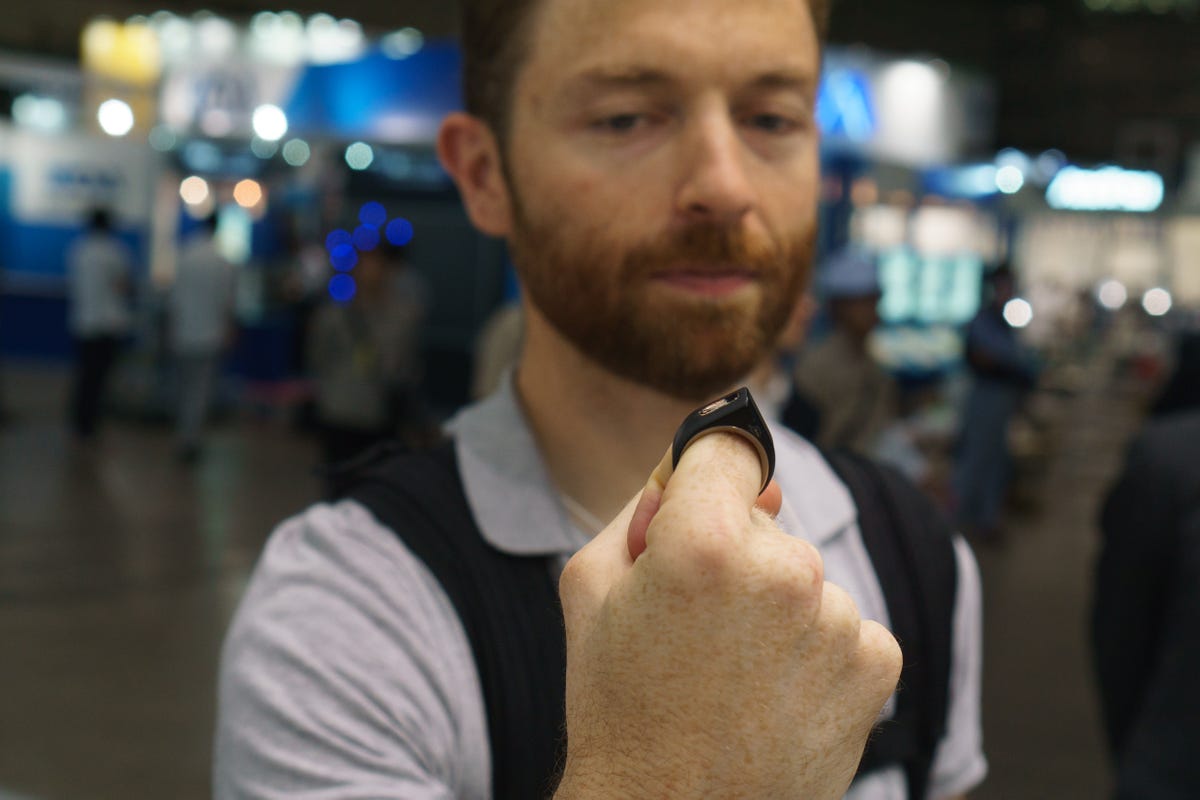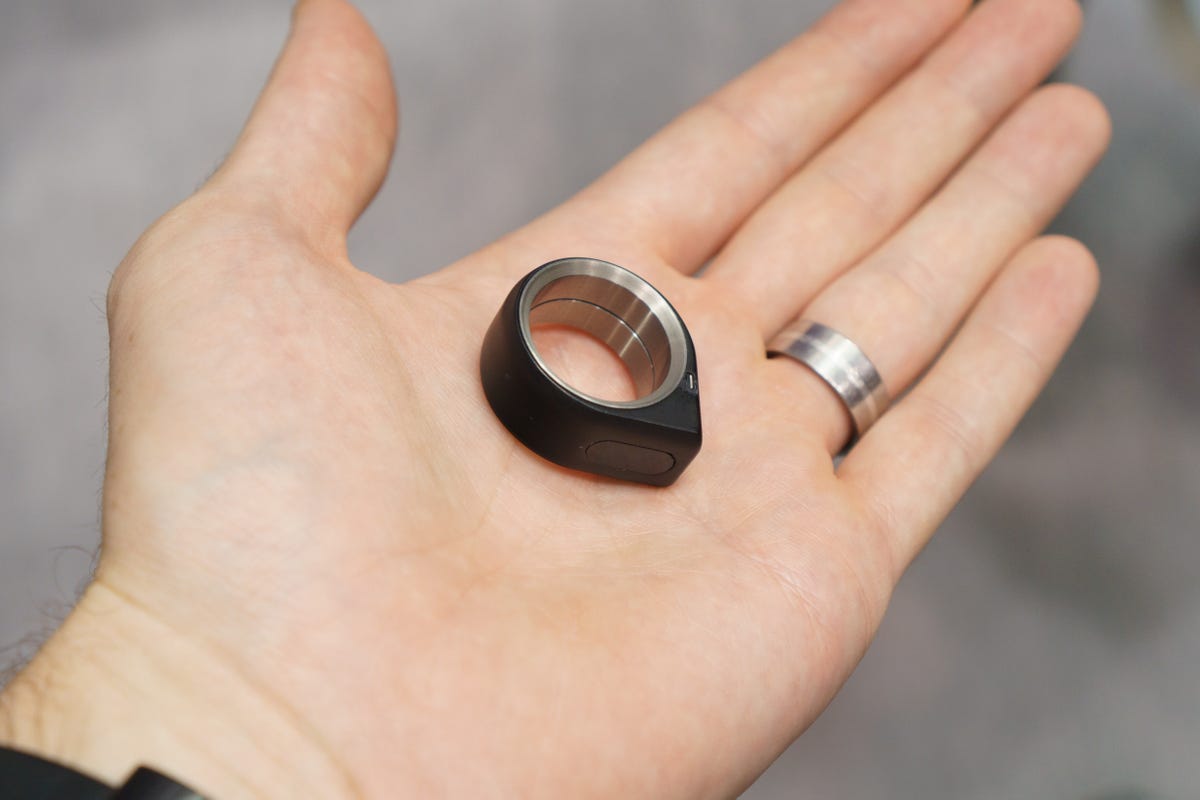
CNET
TOKYO — While our wearable devices are getting smaller and smaller, our fingers haven’t followed suit. Interacting with tiny devices via touch has its limitations, as anyone who’s tried scrolling on a smartwatch or Google Glass can tell you. Gesture control has been proposed as a logical alternative, with the kind of tracking that would see us waving our hands in thin air rather than tapping and dragging on touch-sensitive surfaces.
16Lab concept smart ring could bring gesture control to all your devices (pictures)






There are a variety of ways to make this work, one of the most direct being a ring with an integrated accelerometer. We’ve seen a few products in the past, such as the Apple-centric iRing and, more recently, the more general-purpose Nod. At CEATEC 2014 in Tokyo, I’ve just been given a demonstration of another device that will be making a play for one of your digits.
Called simply “Ring” at this point, it’s made by a company called 16Lab, headed up by award-winning designer Manabu Tago. It’s a simple design: a titanium ring with a somewhat pointy protrusion. This protrusion is made up of dual touch surfaces. To activate the ring, you simply hold your thumb on either one. The ring vibrates subtly and is now awaiting your command.
You can then wave it up and down, twist your hand left or right, or basically move the ring freely in 3D space. The idea is that you pair this over Bluetooth to any of a number of devices — smartwatches, smart glasses, even desktop computers or your HDTV — and make simple motions to move through menus or scroll around webpages.


Tim Stevens/CNET
The ring’s precision is such that writing freehand text is possible. You simply close your hand as if you were holding a pen, then scribble away in the air.
It’s also intended for electronic wallet functionality, assuming you can find a retailer that accepts payment over Bluetooth, and a notification device thanks to its integrated vibration motor.
Doing much of the heavy lifting is a Sensor Network Module from Alps Electric, a 6mm square chip that integrates Bluetooth 4.0, accelerometer and compass. Having all that functionality handled by a single chip means the ring has a much more subtle and stylish design than the Nod, though it still dwarfs even large traditional rings. Still, a representative indicated that they’re working on miniturizing it and hope that the final version will be significantly smaller, while still offering 20 hours of battery life.
16Lab expects to begin taking orders of the ring soon, with a goal of shipping internationally by the end of the second quarter 2015. Price? None was given, but we’re guessing the extra level of design and engineering here will mean the expectation of paying at least a little more than the $149 (£92, AU$170) Nod.



